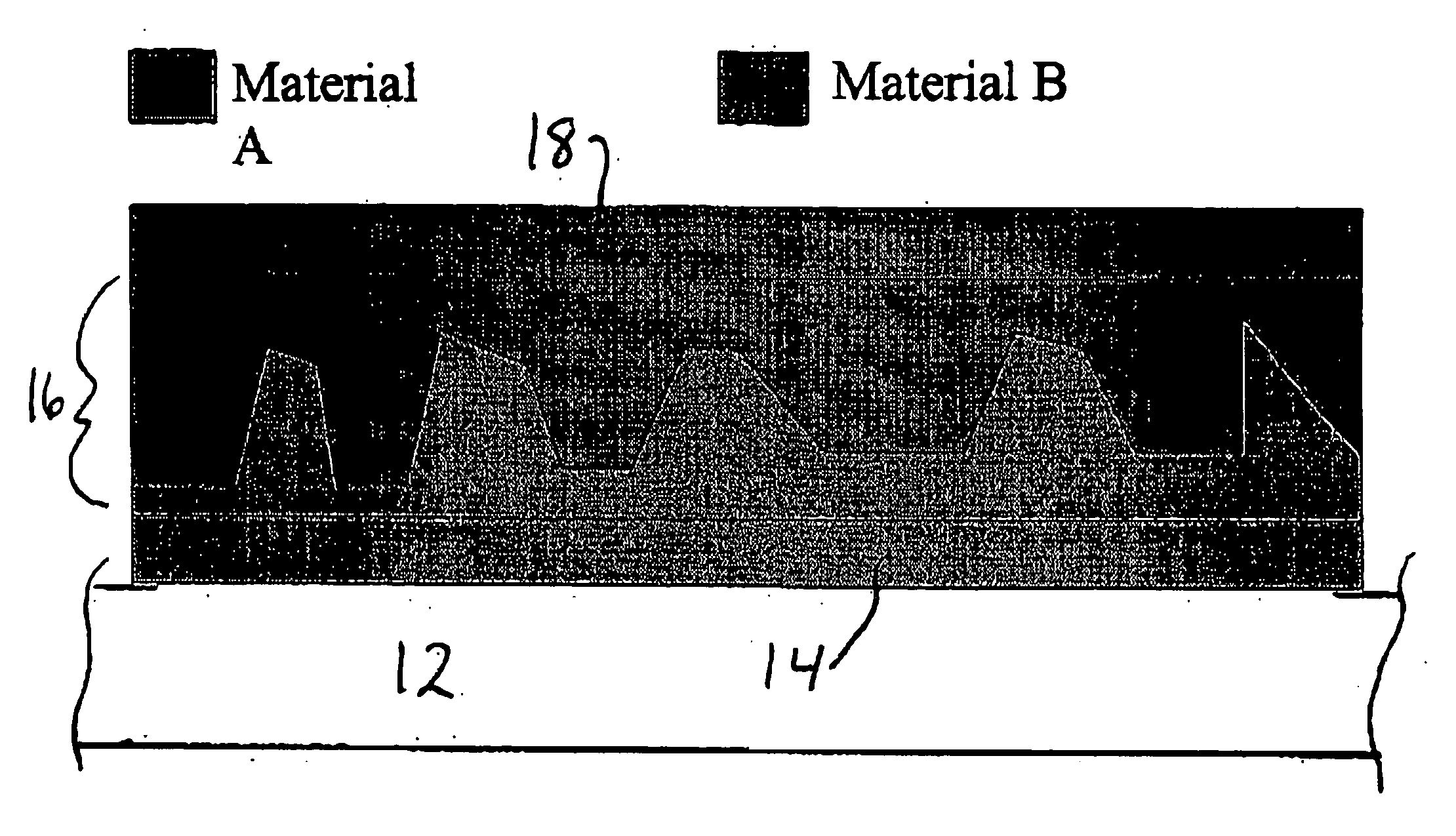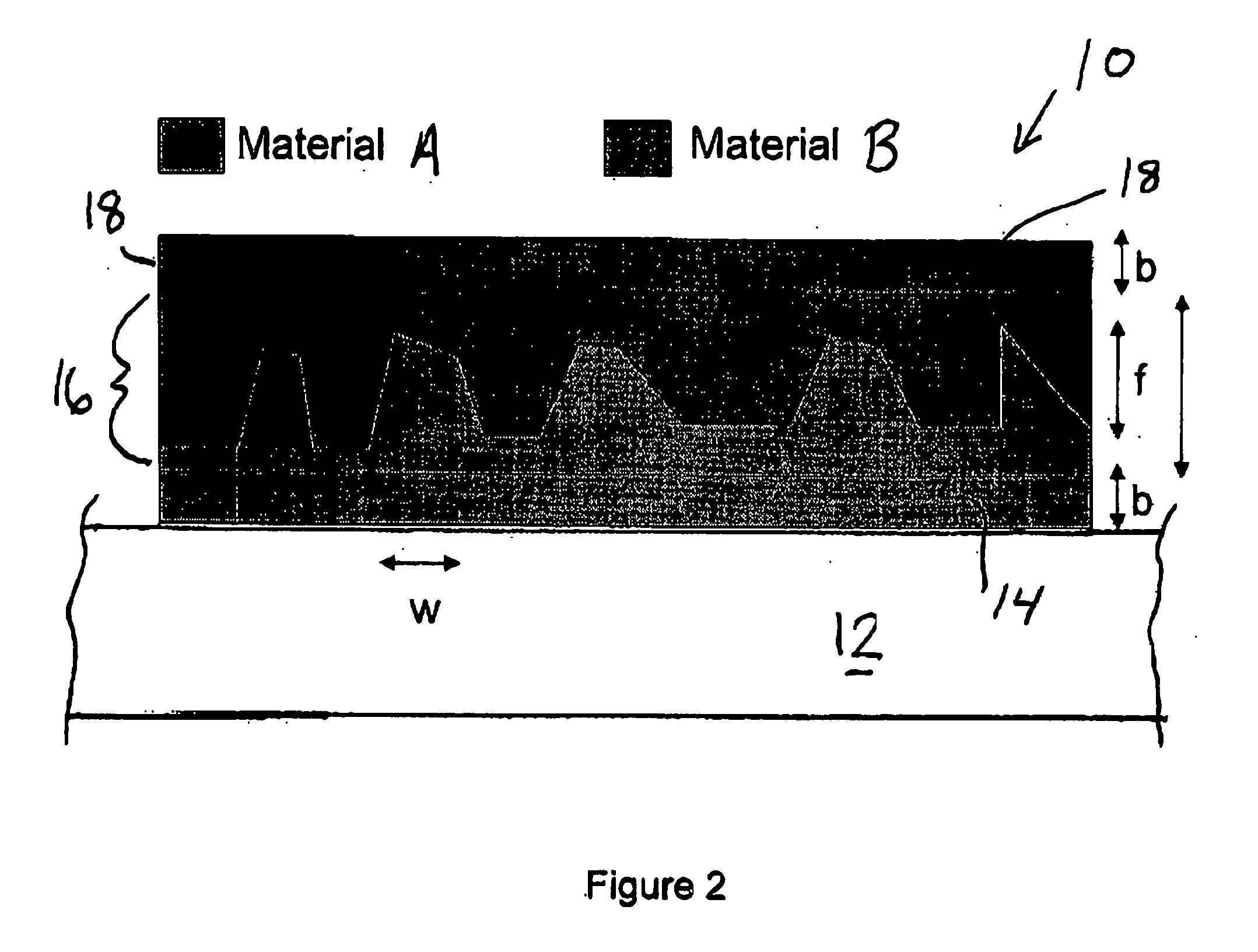Three-dimensional bicontinuous heterostructures, a method of making them, and their application in quantum dot-polymer nanocomposite photodetectors and photovoltaics
a quantum dot-polymer nanocomposite photodetector and photovoltaic technology, applied in the field of three-dimensional bicontinuous heterostructure, can solve the problems of impeded charge transfer between the nanocrystal and the polymer, photodetecting and phoovoltaic polymer devices have yet to demonstrate significant sensitivity beyon
- Summary
- Abstract
- Description
- Claims
- Application Information
AI Technical Summary
Benefits of technology
Problems solved by technology
Method used
Image
Examples
Embodiment Construction
[0041] Referring to FIG. 1, a three-dimensional bicontinuous heterostructure 10 produced in accordance with the present invention includes a substrate 12 having a first layer 14 made from constituent material A, a second layer 16 which constituents A and B are codeposited on top of first layer 14 in such a way as to obtain phase separation of the two constituents to form the second layer 16. A third layer 18 comprised of constituent material B alone is deposited onto layer second layer 16. This structure shown in FIG. 1 then comprises lower layer 14 of material A directly on the substrate 12 and the outer layer 18 of material B with the structure being characterized by layers A and B being highly interpenetrating at the interface between then which forms the second layer 16. The two interpenetrating layers are spatially continuous (they consist only of protrusions (peninsulas) and no islands) and in which each layer forms the exclusive plane of contact to one side, one material to a...
PUM
| Property | Measurement | Unit |
|---|---|---|
| thickness | aaaaa | aaaaa |
| thickness | aaaaa | aaaaa |
| wavelength region | aaaaa | aaaaa |
Abstract
Description
Claims
Application Information
 Login to View More
Login to View More - R&D
- Intellectual Property
- Life Sciences
- Materials
- Tech Scout
- Unparalleled Data Quality
- Higher Quality Content
- 60% Fewer Hallucinations
Browse by: Latest US Patents, China's latest patents, Technical Efficacy Thesaurus, Application Domain, Technology Topic, Popular Technical Reports.
© 2025 PatSnap. All rights reserved.Legal|Privacy policy|Modern Slavery Act Transparency Statement|Sitemap|About US| Contact US: help@patsnap.com



